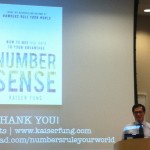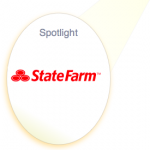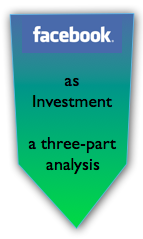 Use Scenarios to Network into Jobs and Contracts reveals a new way to break through when you’re looking for new consulting work or employment for yourself, or you’re fundraising for your startup or nonprofit. As these pages detail, I’ve learned that “breaking through the noise” is easy when you play music. You’ll learn how to do it here. Use Scenarios to Network into Jobs and Contracts reveals a new way to break through when you’re looking for new consulting work or employment for yourself, or you’re fundraising for your startup or nonprofit. As these pages detail, I’ve learned that “breaking through the noise” is easy when you play music. You’ll learn how to do it here.
[…]
 CSRA milestones reflects on my first ten years of experiential social media, seen through the eyes of clients I’ve served. I’ll share what I learned about what outcomes we got in each engagement as well as how it happened that I developed and pioneered experiential, which if a repeatable process for developing trust and profit at scale. CSRA milestones reflects on my first ten years of experiential social media, seen through the eyes of clients I’ve served. I’ll share what I learned about what outcomes we got in each engagement as well as how it happened that I developed and pioneered experiential, which if a repeatable process for developing trust and profit at scale.
If you’d like to watch this post instead, just click the thumbnail button.
[…]

[UPDATED] Big Data Practical Primer is my notes from Kaiser Fung’s presentation at Big Frontier in which he highlighted his new book, Numbers Rule Your World. Big data is a simple word, but its nuances are critical and require a new way of thinking. This presentation did a good job of covering many high-level definitions and issues of big data & analytics and combined those with some practical how-tos that may surprise you. It can be fairly easy to make serious impact, but, as I suggest in Insights, the biggest barrier to big data is one of imagination and the requirement to think creatively about using data correctly to make business decisions that pay off.
[…]
 Next Door Chicago is a newish concept for State Farm Insurance that’s a great example of social business in insurance. It differentiates the firm by interacting in the Social Channel. The Lincoln Park/Lakeview community center and coworking space is notable because its DNA is empowering people to improve their lives through financial education. Next Door offers free coworking space and wifi, classes on financial management that are free of product pitches, free events (some financial, some art showings and other diverse events), free conference rooms and an energetic environment. Only the optional coffee bar is paid. Next Door Chicago is a newish concept for State Farm Insurance that’s a great example of social business in insurance. It differentiates the firm by interacting in the Social Channel. The Lincoln Park/Lakeview community center and coworking space is notable because its DNA is empowering people to improve their lives through financial education. Next Door offers free coworking space and wifi, classes on financial management that are free of product pitches, free events (some financial, some art showings and other diverse events), free conference rooms and an energetic environment. Only the optional coffee bar is paid.
Next Door’s main online presence is oriented toward free membership. Members can book space, sign up for classes and hold events. Here’s IDEO’s case study on the concept and design process.
[…]
How Brands Cut Their Exposure to Facebook Business Risk shows how brands can reduce the risks of depending on Facebook too much.

In the Facebook As Investment trilogy, I have analyzed several dimensions of investing in Facebook and raised my doubts about the company’s management and direction. In Part Three, I’ll address how brand executives can insulate themselves from Facebook’s—or any platform’s—fortunes by moving to make their relationships and networks portable. By making and managing investments carefully, brands’ relationships will endure regardless of platforms’ destinies.
By the way, Part One examined how Facebook’s trust gap would make it difficult for Facebook to fully monetize its considerable assets. Part Two analyzed Facebook as a social platform and revealed that it had no competitive threats from other pureplays; rather, the risk was that the whole pureplay category would lose its dominance in 3-5 years.
[…]
 The B2B Executive’s How-to Guide to Social Business is an executive primer on developing B2B relationships much faster and cheaper. The B2B Executive’s How-to Guide to Social Business is an executive primer on developing B2B relationships much faster and cheaper.
If you have been on several “social media” platforms as a firm or individual for some time but feel that you’re barely scratching the surface, this guide will help you boost your results significantly because: its goal is to help you develop B2B relationships more efficiently, instead of “selling” yourself and it shows you how to use B2B-oriented platforms in concert to increase leverage. If you would like some background on the profound distinction between “selling” yourself and focusing on relationship, “Social Business Disruption of B2B Sales & Marketing” crystallizes it in 8 minutes.
[…]
 This Executive’s Guide to Blogging offers executives a pragmatic, conservative approach to blogging. For years, now, I have beseeched all the executives and “knowledge workers” I know (that’s thousands) to blog, so please consider this as part of that campaign—with benefits (because this is a how-to post). Here’s why: In the Knowledge Economy’s pervasive digital networks, you are invisible unless you come across people’s screens regularly. And, while you are invisible, your potential business partners are seeing people who do flit across their screens. If you aren’t there, you are in a bloody ocean that gets smaller every year. Don’t stay in, the water is not fine. Please understand that I’m stating this as a simple fact. I’m sure you’ve read books like The Long Tail, which describe how we are all publishers now, that is, those of us who decide to use the free tools at our disposal. This Executive’s Guide to Blogging offers executives a pragmatic, conservative approach to blogging. For years, now, I have beseeched all the executives and “knowledge workers” I know (that’s thousands) to blog, so please consider this as part of that campaign—with benefits (because this is a how-to post). Here’s why: In the Knowledge Economy’s pervasive digital networks, you are invisible unless you come across people’s screens regularly. And, while you are invisible, your potential business partners are seeing people who do flit across their screens. If you aren’t there, you are in a bloody ocean that gets smaller every year. Don’t stay in, the water is not fine. Please understand that I’m stating this as a simple fact. I’m sure you’ve read books like The Long Tail, which describe how we are all publishers now, that is, those of us who decide to use the free tools at our disposal.
Blogging is 21st century thought leadership, which is table stakes in the Knowledge Economy. Your thoughts represent and “scale” you, so they help you to connect with people with whom […]
Triple the Value of Your LinkedIn Network by Interacting shows how to attract and maintain the attention of Connections you care most about.
 Old habits die hard, and so it is with the ingrained assumption that “content sells.” Yes, having a current LinkedIn Profile replete with keyword combinations relevant to your High Interest Connections is very important, but it’s back seat to giving your Connections personal attention. Here I’ll address your protest that “I don’t have time!” by sharing some ultra-efficient processes for interacting on LinkedIn. Read on if you want to outperform 99% of other LinkedIn members. Old habits die hard, and so it is with the ingrained assumption that “content sells.” Yes, having a current LinkedIn Profile replete with keyword combinations relevant to your High Interest Connections is very important, but it’s back seat to giving your Connections personal attention. Here I’ll address your protest that “I don’t have time!” by sharing some ultra-efficient processes for interacting on LinkedIn. Read on if you want to outperform 99% of other LinkedIn members.
[…]
 Here’s a useful financial services social business example from Forbes. It details how a Midwest financial services firm grew at competitors’ expense by using LinkedIn, Twitter & legacy communications. Here’s a useful financial services social business example from Forbes. It details how a Midwest financial services firm grew at competitors’ expense by using LinkedIn, Twitter & legacy communications.
Notice that Jefferson, an investments firm, engaged its channel (financial advisors), using LinkedIn, YouTube, Twitter and legacy marcom. Their momentum enabled them to maintain their pricing while competitors felt compelled to lower theirs.
Another powerful lesson is, during “downturns,” don’t follow the herd and cut sales and marketing investments, especially when you can use social business to magnify impact as Jefferson did. Well done! #li
Why Google Plus Should Be on Executives’ Radar explains Google’s new social network and why it commands attention; it changes the context of social networks.

The launch of Google’s new social network has poignant significance for executives—in predictable and surprising ways. Google+ is exceptionally significant because it is an exciting new social venue with the potential to disrupt, but even more important, it can teach us about how the ecosystem works and how organizations can learn to use it to garner support for things they care about. Here I’ll outline my first impressions and give general guidance for executives to take advantage of Google+’s potential.
[…]
|
|
 Use Scenarios to Network into Jobs and Contracts reveals a new way to break through when you’re looking for new consulting work or employment for yourself, or you’re fundraising for your startup or nonprofit. As these pages detail, I’ve learned that “breaking through the noise” is easy when you play music. You’ll learn how to do it here.
Use Scenarios to Network into Jobs and Contracts reveals a new way to break through when you’re looking for new consulting work or employment for yourself, or you’re fundraising for your startup or nonprofit. As these pages detail, I’ve learned that “breaking through the noise” is easy when you play music. You’ll learn how to do it here.
 CSRA milestones reflects on my first ten years of experiential social media, seen through the eyes of clients I’ve served. I’ll share what I learned about what outcomes we got in each engagement as well as how it happened that I developed and pioneered experiential, which if a repeatable process for developing trust and profit at scale.
CSRA milestones reflects on my first ten years of experiential social media, seen through the eyes of clients I’ve served. I’ll share what I learned about what outcomes we got in each engagement as well as how it happened that I developed and pioneered experiential, which if a repeatable process for developing trust and profit at scale.
 Next Door Chicago is a newish concept for State Farm Insurance that’s a great example of social business in insurance. It differentiates the firm by interacting in the Social Channel. The Lincoln Park/Lakeview community center and coworking space is notable because its DNA is empowering people to improve their lives through financial education. Next Door offers free coworking space and wifi, classes on financial management that are free of product pitches, free events (some financial, some art showings and other diverse events), free conference rooms and an energetic environment. Only the optional coffee bar is paid.
Next Door Chicago is a newish concept for State Farm Insurance that’s a great example of social business in insurance. It differentiates the firm by interacting in the Social Channel. The Lincoln Park/Lakeview community center and coworking space is notable because its DNA is empowering people to improve their lives through financial education. Next Door offers free coworking space and wifi, classes on financial management that are free of product pitches, free events (some financial, some art showings and other diverse events), free conference rooms and an energetic environment. Only the optional coffee bar is paid.
 The B2B Executive’s How-to Guide to Social Business is an executive primer on developing B2B relationships much faster and cheaper.
The B2B Executive’s How-to Guide to Social Business is an executive primer on developing B2B relationships much faster and cheaper. This Executive’s Guide to Blogging offers executives a pragmatic, conservative approach to blogging. For years, now, I have beseeched all the executives and “knowledge workers” I know (that’s thousands) to blog, so please consider this as part of that campaign—with benefits (because this is a how-to post). Here’s why: In the Knowledge Economy’s pervasive digital networks, you are invisible unless you come across people’s screens regularly. And, while you are invisible, your potential business partners are seeing people who do flit across their screens. If you aren’t there, you are in a bloody ocean that gets smaller every year. Don’t stay in, the water is not fine. Please understand that I’m stating this as a simple fact. I’m sure you’ve read books like The Long Tail, which describe how we are all publishers now, that is, those of us who decide to use the free tools at our disposal.
This Executive’s Guide to Blogging offers executives a pragmatic, conservative approach to blogging. For years, now, I have beseeched all the executives and “knowledge workers” I know (that’s thousands) to blog, so please consider this as part of that campaign—with benefits (because this is a how-to post). Here’s why: In the Knowledge Economy’s pervasive digital networks, you are invisible unless you come across people’s screens regularly. And, while you are invisible, your potential business partners are seeing people who do flit across their screens. If you aren’t there, you are in a bloody ocean that gets smaller every year. Don’t stay in, the water is not fine. Please understand that I’m stating this as a simple fact. I’m sure you’ve read books like The Long Tail, which describe how we are all publishers now, that is, those of us who decide to use the free tools at our disposal. Here’s a useful financial services social business example from Forbes. It details how a Midwest financial services firm grew at competitors’ expense by using LinkedIn, Twitter & legacy communications.
Here’s a useful financial services social business example from Forbes. It details how a Midwest financial services firm grew at competitors’ expense by using LinkedIn, Twitter & legacy communications.